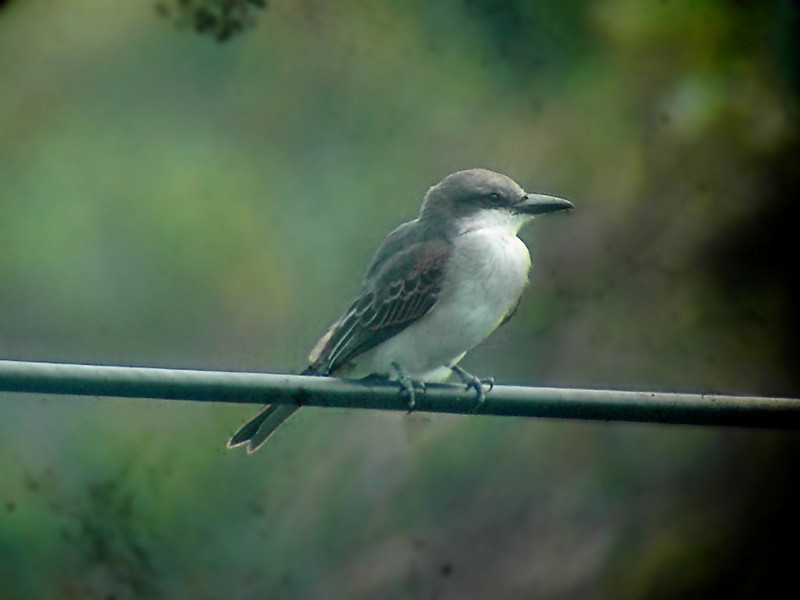Gray Kingbird (Tyrannus dominicensis) - wiki Gray Kingbird
From Wikipedia, the free encyclopedia
[Photo] Tyrannus dominicensis at Palm Tree House, Woodford Hill, Dominica, W.I. Date 28/05/2006. Author Hans Hillewaert (Lycaon http://commons.wikimedia.org/wiki/User:Lycaon)
The Gray Kingbird, also known as Pitirre, Tyrannus dominicensis, is a passerine bird. It breeds from the extreme southeast of the USA through Central America, from Cuba to Puerto Rico as well as eastward towards all across the Lesser West Indies, south to Venezuela, Trinidad, Tobago the Guiana and Colombia. Northern populations are migratory, wintering on the Caribbean coast of Central America and northern South America.
This tyrant flycatcher is found in tall trees and shrubs, including the edges of savanna and marshes. It makes a flimsy cup nest in a tree. The female incubates the typical clutch of two cream eggs, which are marked with reddish-brown.
The adult Gray Kingbird is 23 cm long and weighs 47g. The upperparts are grey, with brownish wings and tail, and the underparts are white with a grey tinge to the chest. The head has a concealed yellow crown stripe, and a dusky mask through the eyes. The dark bill is heavier than that of the related, slightly smaller, Tropical Kingbird. The sexes are similar, but young birds have rufous edges on the wing coverts, rump and tail.
The call is a loud rolling trill, pipiri pipiri, which is the reason behind many of it's local names, like pestigre or pitirre, in the Spanish-speaking Greater Antilles, or "petchary" in some of the English-speaking zones.
Gray Kingbirds wait on an exposed perch high in a tree, occasionally sallying out to feed on insects, their staple diet.
These birds aggressively defend their territory against intruders, including mammals and much larger birds such as caracaras or hawks (in the Caribbean Region, Red-Tailed Hawks: B. j. jamaicensis). This phenomenon has propelled the pitirre into a national symbol (a sort of David vs. Goliath figure) that serves as a powerful and widespread nationalist symbol in Puerto Rico as well as a metaphor for the Puerto Rican Independence Movement.
It is found in increasing numbers in the state of Florida, and is more often found inland where it had been previous restricted to the coast. The species was first described on the island of Hispaniola, then called Santo Domingo, thus the dominicensis name.
http://en.wikipedia.org/wiki/Gray_Kingbird
| The text in this page is based on the copyrighted Wikipedia article shown in above URL. It is used under the GNU Free Documentation License. You may redistribute it, verbatim or modified, providing that you comply with the terms of the GFDL. |
